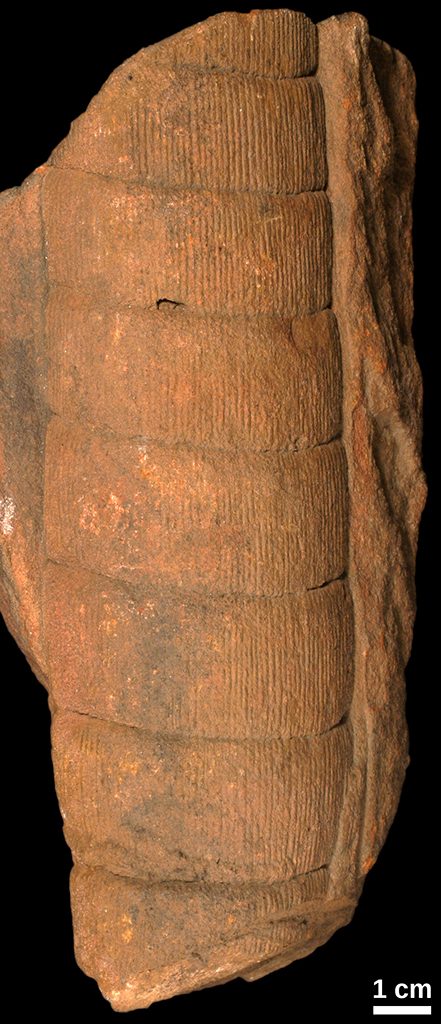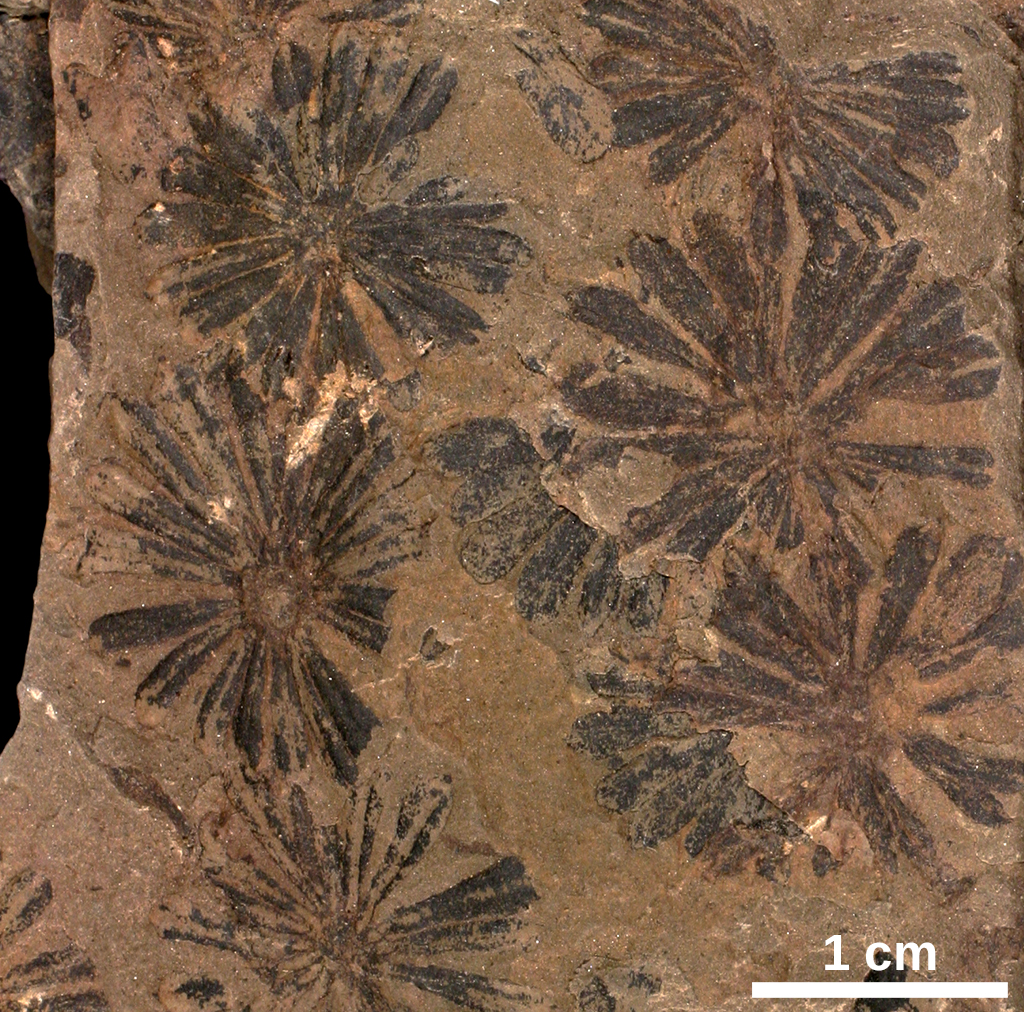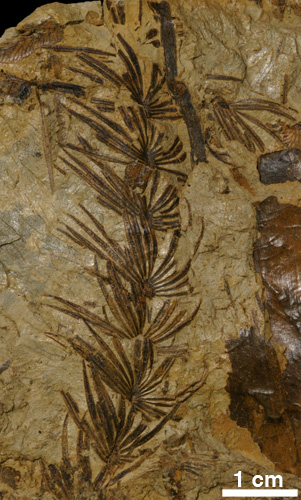
Sphenophytes (Horsetails and their extinct relatives)
Fossils of sphenophytes are among the most common plant fossils reported in Oklahoma; one type of fossil, which we can call Calamites, represents about half of all plant fossils brought to the museum for identification by our staff. Sphenophyte fossils may be found in rocks that were deposited during both the Pennsylvanian and Permian Periods as impressions, compressions, casts and molds.
Sphenophytes include relatives of living horsetails and extinct plant groups that were probably closely related.
Calamites
Calamites is a name (= form-genus) for compression/impression and pith casts of arborescent sphenophytes related to modern horsetails. Calamites can be distinguished from a separate form-genus called Archaeocalamites, but technical issues of naming as well as imperfect preservation of fossils makes separating these genera in the field problematic. For convenience, we will use Calamites for all stem fossils as well as for the entire plant.
Some Calamites grew to over 60 feet (20 meters) tall and bore leaves in clusters that, found separately, are placed in the form-genera Annularia and Asterophyllites. Calamites and their leaves are commonly found in Carboniferous rocks in Oklahoma.
Calamites may be found as cylindrical casts or elongate compressions/impressions. In either form, Calamites may be recognized by grooves/lines running the length of the specimen that are regularly and closely spaced and horizontal grooves or nodes that are widely spaced and might not be regularly spaced.
In some cylindrical casts, small circular bumps appear along the horizontal nodes. If the small bumps are present, your specimen is a cast (sediment infilling) of the pith—the central portion of Calamites inside the wood of the stem. If bumps are not present, your specimen is most likely a cast of the inner surface of the bark outside of the wood of the stem.




Annularia
Annularia is the name (= form-genus) for one type of leaf of Calamites. Annularia is recognized by the cluster of leaves (usually more than 8) that are elongate and narrow, and possess a midvein running the length to or close to the tip. The clusters, called whorls, are only at spaced nodes. The leaves are fused into a ring at their base near the stem. As compressions/impressions, the whole cluster shows a distinct “starburst” appearance—a complete circle of leaves. Annularia is distinguished from Asterophyllites by its starburst circle of leaves in contrast to the upward cup of leaves in Asterophyllites. Annularia is distinguished from Sphenophyllum by its single midvein and non-triangular shape.






Asterophyllites
Asterophyllites is the name (= form-genus) for one type of leaf of Calamites. Asterophyllites is recognized by the cluster of leaves (usually more than 8) that are narrow and possess a midvein running the length to or close to the tip. The clusters, called whorls, occur only at spaced nodes along the stem. As compressions/impressions, the whole cluster is curved upward forming a cup of leaves, each leaf more-or-less pointing toward the top of the stem. Asterophyllites is distinguished from Annularia by its upward cup of leaves in contrast to the starburst circle of leaves in Annularia. Asterophyllites is distinguished from Sphenophyllum by its single midvein and non-triangular leaf shape.




Sphenophyllum
Sphenophyllum is the name (= form-genus) for compression/impression remains of leaves of an enigmatic sphenophyte. Sphenophyllum historically has been allied with horsetails by their similar morphology (leaves in circlets, called whorls, positioned at nodes along the stem) but this relationship is hardly definite. Sphenophyllum is recognized by a circle of triangular leaves, usually 8 or fewer around a node, with 1 or 2 veins entering the base of the leaf and dividing repeatedly from base to tip. The tips of Sphenophyllum leaves may be smooth, jagged (toothed) or forked. Sphenophyllum may be distinguished from both Annularia and Asterophyllites by the triangular leaf shape in contrast with their narrow elongate leaves, and by the many branching veins in contrast to their single midvein.











